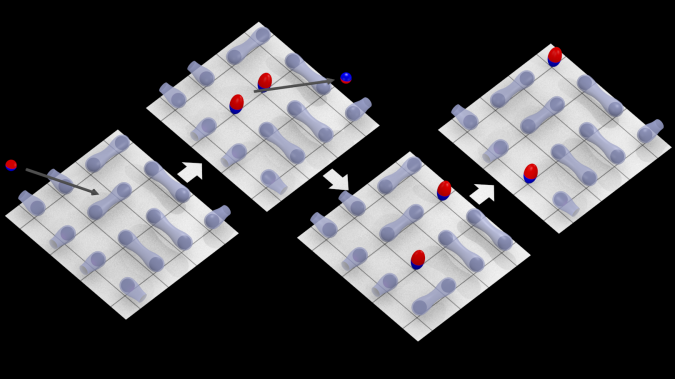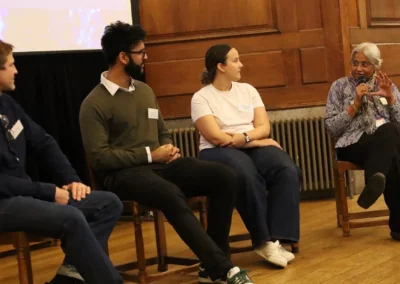Electrons carry both a charge and a magnetic moment, and the collective way in which electrons behave leads to the familiar electrical and magnetic properties of materials. Isolated electrons are fundamental particles, in the sense that they are believed to be indivisible into smaller entities. Electrons in an interacting system, on the other hand, take on a different guise, becoming quasi-particles, which in certain circumstances are believed to break up, or fractionalise, into new types of quasi-particle.
The most extreme form of quasi-particle fractionalisation is observed in one-dimensional conductors, where the magnetic and electrical properties of the electron quasi-particles part company completely, exhibiting a phenomenon known as spin-charge separation. While it is known that fractionalisation can also occur in higher dimensions – as, for example, in the quantum Hall effect – observing such phenomena particularly in magnetic systems has proven to be elusive.
An international team of scientists from Switzerland, the USA, France, Denmark and Britain, including members from the LCN, recently reported in Nature Physics the observation of fractionalisation in a two-dimensional quantum magnet. Their study combined state-of-the-art polarized neutron scattering techniques with a new theoretical framework. This allowed them to establish definitively that the magnetic quasi-particles, known as magnons, split into two halves (‘spinons’), that move independently of one another, at specific energies and along specific directions in the material (See Fig. 1).
“This work marks a new level of understanding of one of the most fundamental models in physics,” said Henrik M. Rønnow from EPFL . “It also lends new support for Anderson’s theory of high-temperature superconductivity, which, despite twenty-five years of intense research, remains one of the greatest mysteries in science.”

| Figure 1. Illustration of fractionalization in the square lattice antiferromagnet: The electron’s magnetic moments pair up into a non-magnetic quantum entangled state called a singlet (connected pairs of blue spheres) forming a singlet sea. An incoming particle (red and blue sphere), for instance a neutron, polarizes a singlet into two fractional particles called spinons (elongated red and blue spheres). Once created, the two spinons can float free of each other into the singlet sea. |
Journal link: Fractional excitations in the square-lattice quantum antiferromagnet, Dalla Piazza et al., Nature Physics 11, 62–68 (2015) doi:10.1038/nphys3172



